Advanced Search: Build a Custom Dashboard
In the fields below, search for indicators by location, topics, population, classification, subgroup, or comparison. No fields are required, but we suggest selecting a location or two to start. In the additional search options section, select options to group and order search results. To learn more about how to customize a dashboard, see our help center.
Visit the Indicator List Page to see the full list of indicators and locations available on the site.
Search Results:
Indicator Gauge Icon Legend
Legend Colors
Red is bad, green is good, blue is not statistically different/neutral.
Compared to Distribution
 the value is in the best half of communities.
the value is in the best half of communities.
 the value is in the 2nd worst quarter of communities.
the value is in the 2nd worst quarter of communities.
 the value is in the worst quarter of communities.
the value is in the worst quarter of communities.
Compared to Target
 meets target;
meets target;  does not meet target.
does not meet target.
Compared to a Single Value
 lower than the comparison value;
lower than the comparison value;
 higher than the comparison value;
higher than the comparison value;
 not statistically different from comparison value.
not statistically different from comparison value.
Trend

 non-significant change over time;
non-significant change over time; 
 significant change over time;
significant change over time;  no change over time.
no change over time.
Compared to Prior Value
 higher than the previous measurement period;
higher than the previous measurement period;
 lower than the previous measurement period;
lower than the previous measurement period;
 no statistically different change from previous measurement period.
no statistically different change from previous measurement period.
Environmental Health / Air
Environmental Health / Air
County: Hawaii
County: Hawaii Adults Exposed to Secondhand Smoke
County: Hawaii Adults Exposed to Secondhand Smoke




County: Hawaii Annual Particle Pollution
County: Hawaii Annual Particle Pollution
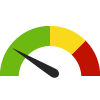


County: Hawaii Days with Unsatisfactory Air Quality
County: Hawaii Days with Unsatisfactory Air Quality




County: Hawaii Recognized Carcinogens Released into Air
County: Hawaii Recognized Carcinogens Released into Air


Environmental Health / Built Environment
Environmental Health / Built Environment
County: Hawaii
County: Hawaii Access to Exercise Opportunities
County: Hawaii Access to Exercise Opportunities
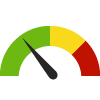


County: Hawaii Access to Parks
County: Hawaii Access to Parks








County: Hawaii Adults Who Meet Aerobic Physical Activity Guidelines
County: Hawaii Adults Who Meet Aerobic Physical Activity Guidelines






County: Hawaii Adults Who Meet High Aerobic Physical Activity Guidelines
County: Hawaii Adults Who Meet High Aerobic Physical Activity Guidelines






County: Hawaii Adults Who Meet Muscle Strengthening Guidelines
County: Hawaii Adults Who Meet Muscle Strengthening Guidelines






County: Hawaii Community Spending on Transportation
County: Hawaii Community Spending on Transportation



County: Hawaii Food Environment Index
County: Hawaii Food Environment Index
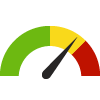




County: Hawaii Liquor Store Density
County: Hawaii Liquor Store Density





County: Hawaii Overcrowded Households
County: Hawaii Overcrowded Households



County: Hawaii Proximity to Highways
County: Hawaii Proximity to Highways


County: Hawaii Severe Housing Problems
County: Hawaii Severe Housing Problems
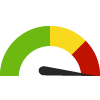




Environmental Health / Energy & Sustainability
Environmental Health / Energy & Sustainability
County: Hawaii
County: Hawaii Gasoline and Other Fuels Spending-to-Income Ratio
County: Hawaii Gasoline and Other Fuels Spending-to-Income Ratio
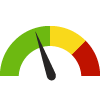


County: Hawaii Utilities Spending-to-Income Ratio
County: Hawaii Utilities Spending-to-Income Ratio



Environmental Health / Toxins & Contaminants
Environmental Health / Toxins & Contaminants
County: Hawaii
County: Hawaii Adults with Current Asthma
County: Hawaii Adults with Current Asthma




County: Hawaii Asthma Death Rate
County: Hawaii Asthma Death Rate





County: Hawaii Asthma Death Rate 35-64 Yrs
County: Hawaii Asthma Death Rate 35-64 Yrs




County: Hawaii Asthma: Medicare Population
County: Hawaii Asthma: Medicare Population
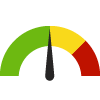





County: Hawaii Children with Current Asthma
County: Hawaii Children with Current Asthma




County: Hawaii ED Visits for Asthma among Adults 65+
County: Hawaii ED Visits for Asthma among Adults 65+





County: Hawaii ED Visits for Asthma among Children 0-4
County: Hawaii ED Visits for Asthma among Children 0-4





County: Hawaii ED Visits for Asthma: 5-64 yrs
County: Hawaii ED Visits for Asthma: 5-64 yrs





County: Hawaii Hospitalizations for Asthma 5-64 yrs
County: Hawaii Hospitalizations for Asthma 5-64 yrs




County: Hawaii Hospitalizations for Asthma among Adults 65+
County: Hawaii Hospitalizations for Asthma among Adults 65+




County: Hawaii Hospitalizations for Asthma Among Children 0-4
County: Hawaii Hospitalizations for Asthma Among Children 0-4




County: Hawaii PBT Released
County: Hawaii PBT Released


County: Hawaii Safe Beaches for Swimming
County: Hawaii Safe Beaches for Swimming


County: Hawaii Smoke-Free Homes
County: Hawaii Smoke-Free Homes



Environmental Health / Weather & Climate
Environmental Health / Weather & Climate
County: Hawaii
County: Hawaii Daily Dose of UV Irradiance
County: Hawaii Daily Dose of UV Irradiance



County: Hawaii Weeks of Moderate Drought or Worse
County: Hawaii Weeks of Moderate Drought or Worse



